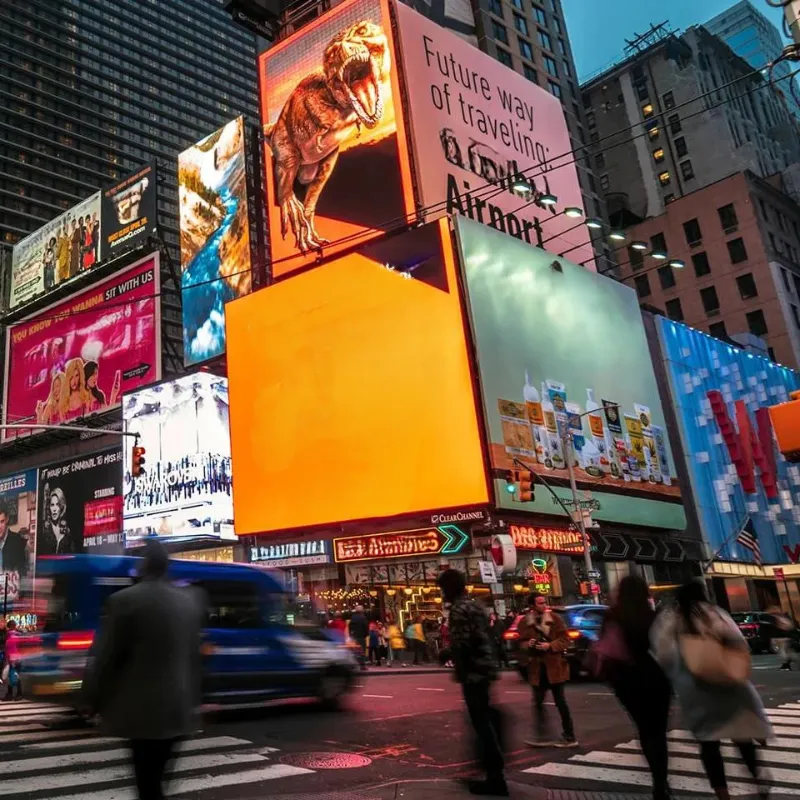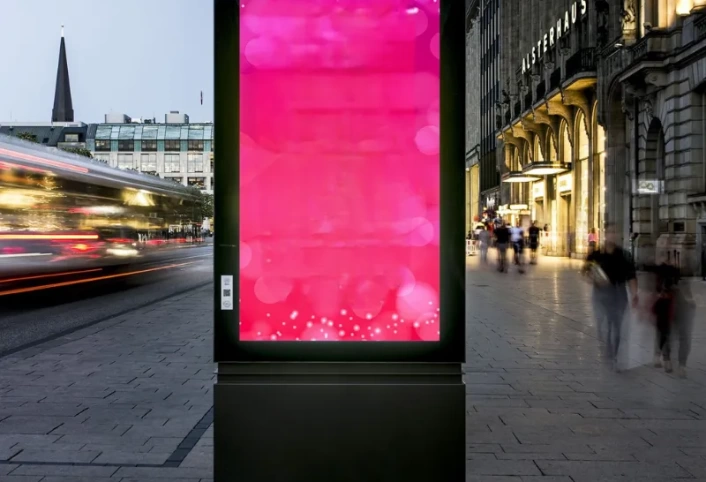In today’s fast-paced, technology-driven world, the way we communicate and share information has drastically changed. Traditional advertising methods are increasingly being overshadowed by digital innovations that offer more dynamic and engaging ways to reach audiences. Among these innovations, Digital LED Billboards have emerged as one of the most powerful tools in outdoor advertising. This blog delves into what digital billboards are, why they are so effective, and how they are shaping the future of advertising.
What is a Digital LED Billboard?
A digital LED billboard is an advanced advertising platform that uses LED (Light Emitting Diode) technology to display high-resolution images and videos. Unlike traditional billboards, which rely on static images printed on large sheets, digital billboards can broadcast dynamic content that can be changed and updated instantly. This capability allows advertisers to display a wide range of content, from simple images to complex video advertisements, in the most vibrant and attention-grabbing way possible.
The rise of digital billboards is largely attributed to the growing demand for more interactive and engaging forms of communication. In an age where information technology (ICT) has transformed how we consume content, traditional advertising mediums have lost some of their appeal. Digital billboards, with their ability to present dynamic and immediate content, have stepped in to fill this gap, offering businesses a more effective way to capture the attention of potential customers.
Why Digital Billboards Are Revolutionizing Advertising
The success of digital LED billboards lies in their unique ability to combine the visibility of traditional billboards with the flexibility and engagement of digital media. Here are some of the key reasons why digital billboards are becoming the preferred choice for advertisers:
1. Dynamic and Immediate Content: One of the most significant advantages of digital billboards is their ability to display dynamic content. Unlike traditional billboards, which are limited to a single, static image, digital billboards can rotate through multiple ads, showcase videos, and even incorporate live updates. This flexibility allows advertisers to present more information in a more engaging way, keeping the content fresh and relevant.
2. High Visibility in Urban Areas: Digital billboards are often strategically placed in the busiest areas of cities, where they can capture the attention of large numbers of people. Their bright, high-resolution displays make them hard to miss, even in daylight, ensuring that the advertisements reach a wide audience. This is particularly beneficial for businesses looking to increase brand awareness and drive traffic to their stores or websites.
3. Integration with Other Technologies: Digital billboards can be integrated with other technologies, such as 3D displays or augmented reality, to create even more immersive advertising experiences. For example, some billboards now incorporate 3D elements that make the content appear to leap off the screen, capturing even more attention and making a lasting impression on viewers.
4. Cost-Effective Advertising: While the initial investment in digital billboards may be higher than traditional billboards, the long-term benefits often outweigh the costs. Digital billboards can display multiple advertisements in the same space, allowing for cost-sharing between different advertisers. Additionally, because the content can be updated remotely and in real-time, there are no printing costs or downtime associated with changing ads.
5. Real-Time Updates and Flexibility: One of the most significant benefits of digital billboards is the ability to update content in real-time. This is particularly useful for time-sensitive campaigns, such as sales promotions or event announcements, where advertisers need to get their message out quickly. The flexibility of digital billboards also allows for more creative and responsive advertising, adapting to changing market conditions or consumer behavior.
The Strategic Use of Digital Billboards in Urban Areas
While digital billboards have been restricted on certain roads in Europe due to safety concerns, they continue to thrive in urban environments where their impact is most significant. Their presence in bustling city centers, on busy streets, and in high-traffic areas ensures that they reach a large and diverse audience. Here’s why digital billboards are so effective in these settings:
1. Capturing Attention in High-Traffic Areas: In urban areas, where people are constantly bombarded with information, standing out is crucial. Digital billboards, with their bright displays and dynamic content, are designed to capture attention even in the most crowded environments. Whether it’s a commuter glancing up during a traffic stop or a pedestrian walking through a busy shopping district, digital billboards ensure that your message is seen.
2. Enhancing the Urban Landscape: Beyond their advertising capabilities, digital billboards contribute to the vibrancy of urban landscapes. They bring a modern, futuristic feel to cities, making the environment more dynamic and engaging. This not only benefits advertisers but also enhances the overall experience for residents and visitors, making the cityscape more lively and appealing.
3. Supporting Local Businesses: Digital billboards offer local businesses a powerful platform to reach potential customers within their community. By strategically placing billboards in areas where their target audience is likely to be, businesses can drive foot traffic and increase brand visibility. This is especially important in today’s competitive market, where local businesses need to leverage every available resource to stand out.
The Future of Digital Billboards in Advertising
As digital technology continues to evolve, so too will the capabilities of digital billboards. The future of outdoor advertising is likely to see even more innovative uses of digital billboards, including:
– Increased Personalization: With advances in data analytics and artificial intelligence, digital billboards may soon be able to deliver personalized content to viewers based on real-time data. For example, billboards could display different ads depending on the time of day, weather conditions, or even the demographics of the audience in the area.
– Enhanced Interactivity: The future may also see more interactive digital billboards that allow passersby to engage with the content directly. This could include touch-screen capabilities, QR codes that link to online content, or even interactive games that draw people in and create a memorable experience.
– Sustainability and Eco-Friendly Solutions: As businesses become more environmentally conscious, the use of energy-efficient technologies in digital billboards is likely to increase. This could include solar-powered billboards or displays made from sustainable materials, reducing the environmental impact of outdoor advertising.
– Seamless Integration with Smart Cities: As cities become smarter and more connected, digital billboards are likely to play a crucial role in urban communication networks. They could be integrated with other city infrastructure to provide real-time information on traffic, public transport, or emergency alerts, making them a valuable resource for both advertisers and city planners.
Conclusion
Digital LED billboards are transforming the landscape of outdoor advertising, offering businesses a powerful and flexible tool to engage with their audiences. Their ability to display dynamic, high-resolution content in real-time makes them far more effective than traditional billboards, especially in urban environments where visibility and impact are key. As technology continues to advance, digital billboards are poised to become even more integral to the future of advertising, offering new opportunities for creativity, interactivity, and engagement. Whether you’re a large corporation or a local business, investing in digital LED billboards is a smart move to stay ahead in the ever-competitive advertising world





